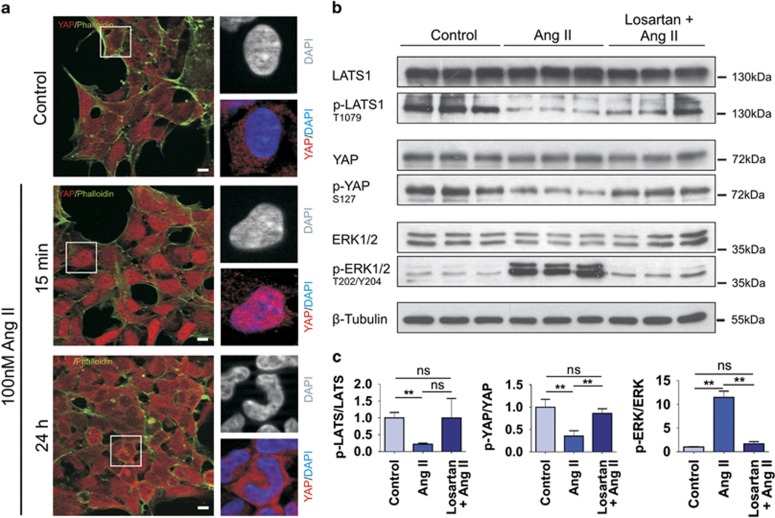Figure 1.
The Angiotensin II receptor AT1R is an upstream regulator of the Hippo pathway. (a) Immunofluorescence staining showed homogenous cytoplasmic as well as nuclear localization of YAP (red) in unstimulated AT1R-overexpressing HEK293 cells; DAPI (blue) marks the nuclei and Alexa 488 Phalloidin (green) the actin cytoskeleton. Ang II stimulation (100 nM) for 15 min led to translocation of YAP to the nuclei. This effect was not seen in cells after prolonged Ang II treatment (100 nM, 24 h). Scale bars represent 10 μm. (b) Western blot analysis of sets of three independent extracts from AT1R-overexpressing HEK293 cells; unstimulated (left panel), stimulated (100 nM Ang II, 30 min, middle panel) or pretreated with the AT1R inhibitor Losartan (1 μM for 4 h) prior to stimulation with Ang II (right panel). Immunological detection revealed an Ang II-dependent strong increase of ERK phosphorylation, accompanied by the dephosphorylation of LATS1 on T1079 and its downstream target YAP on S127. The specific inhibition of Ang II signaling by the AT1R blocker Losartan demonstrated that phosphorylation (ERK) and dephosphorylation effects (LATS/YAP) are solely due to Ang II stimulation. (c) The ratio between phosphorylated and total amount of the protein is calculated and indicated (mean and S.D., t-test, **P<0.01; ns: not significant)

